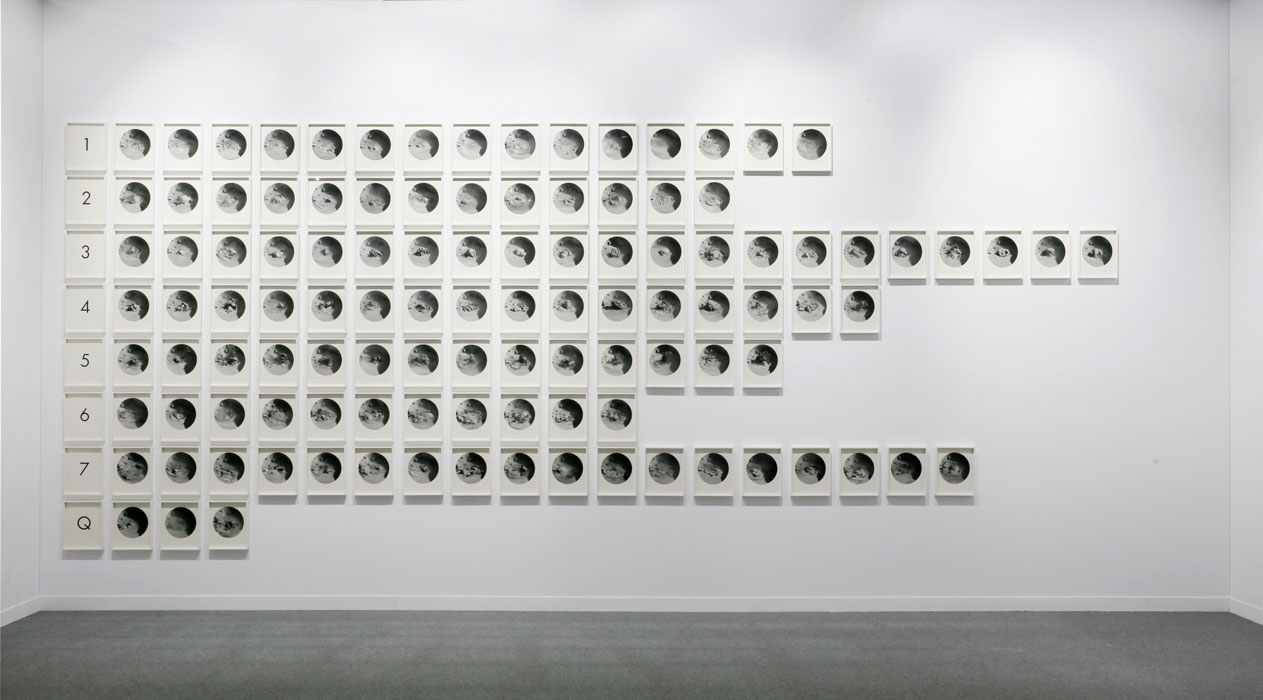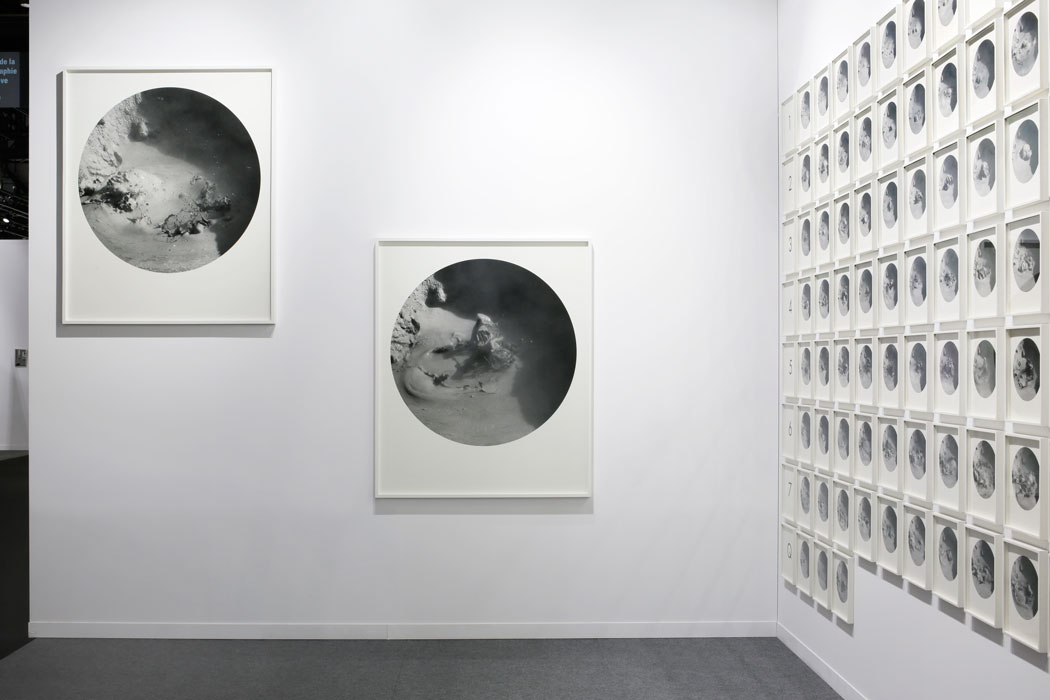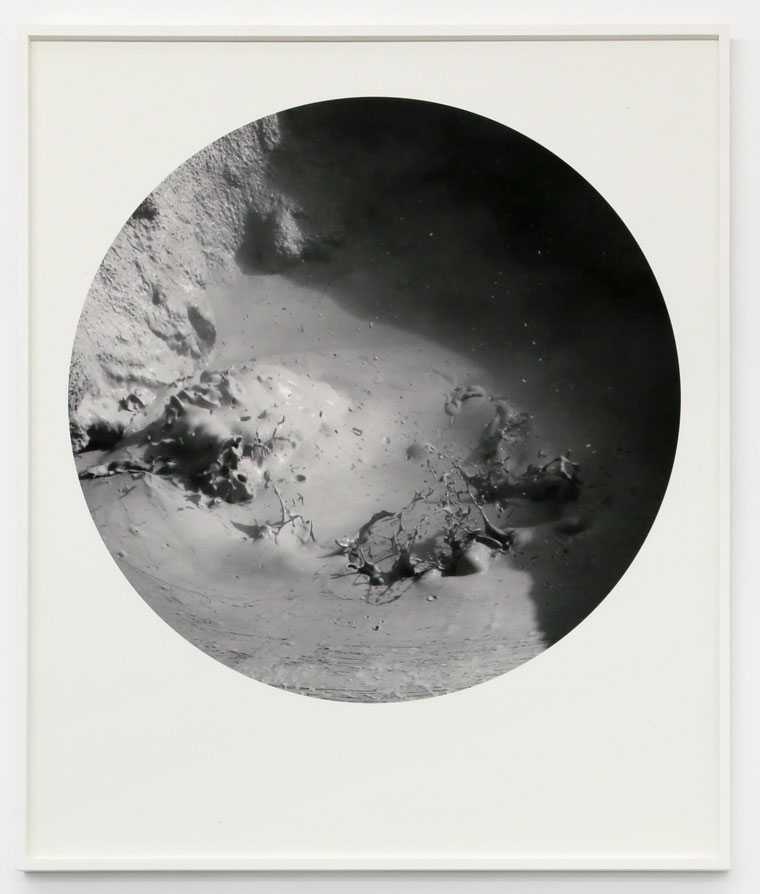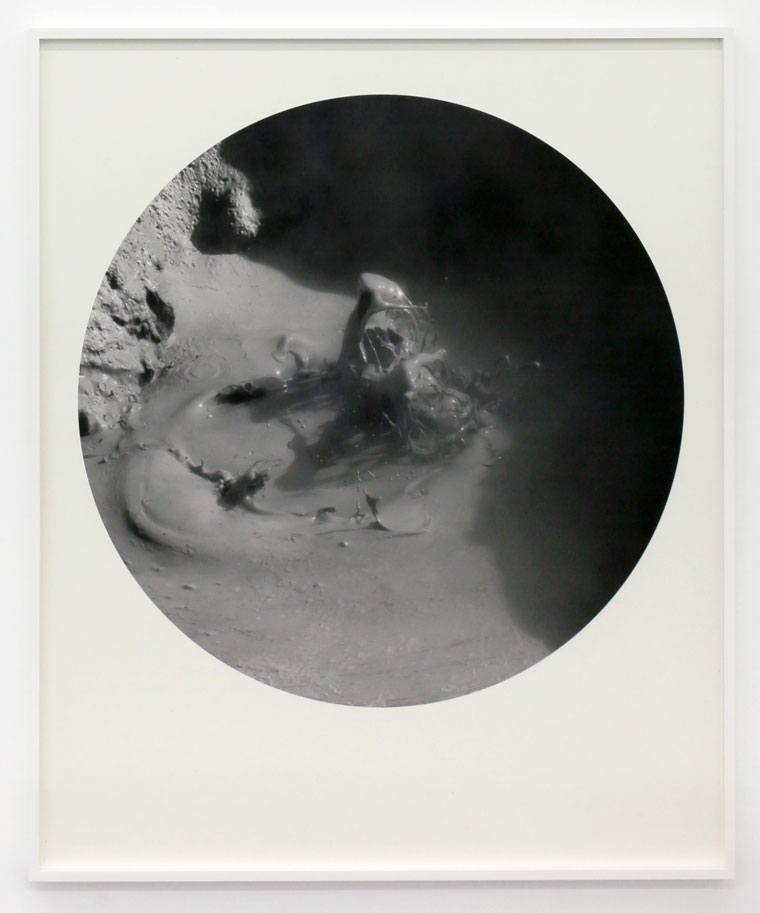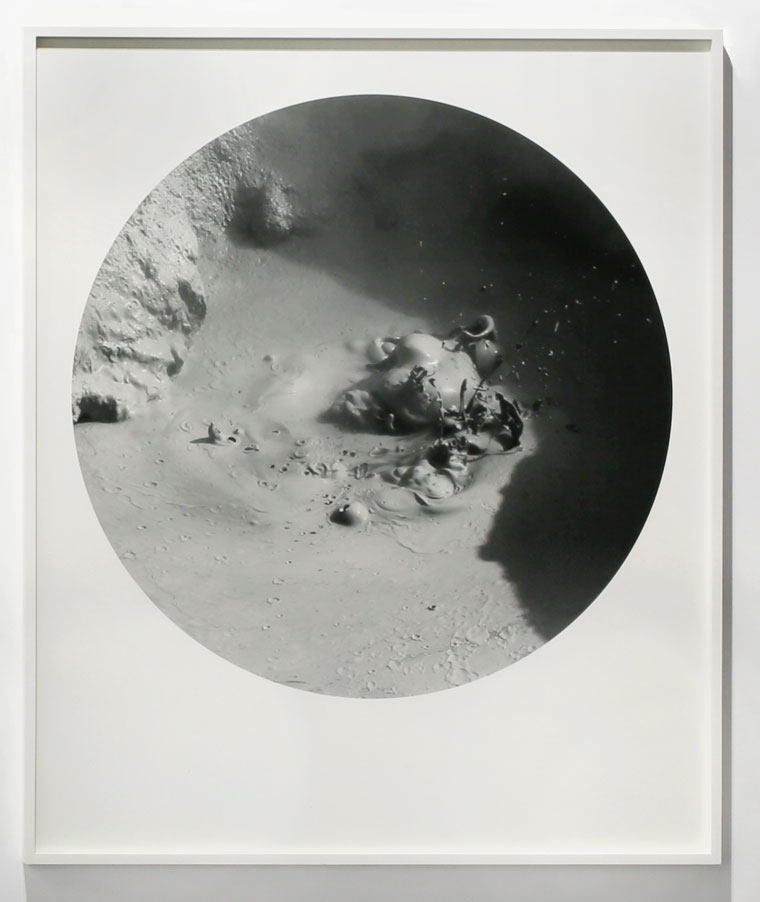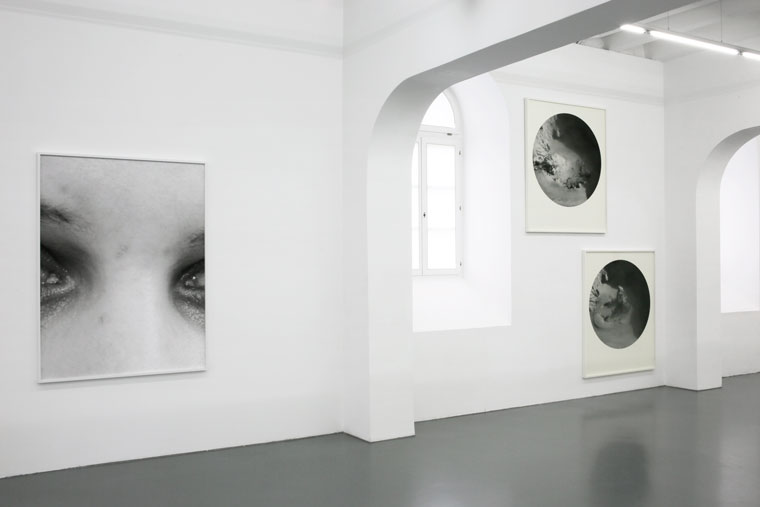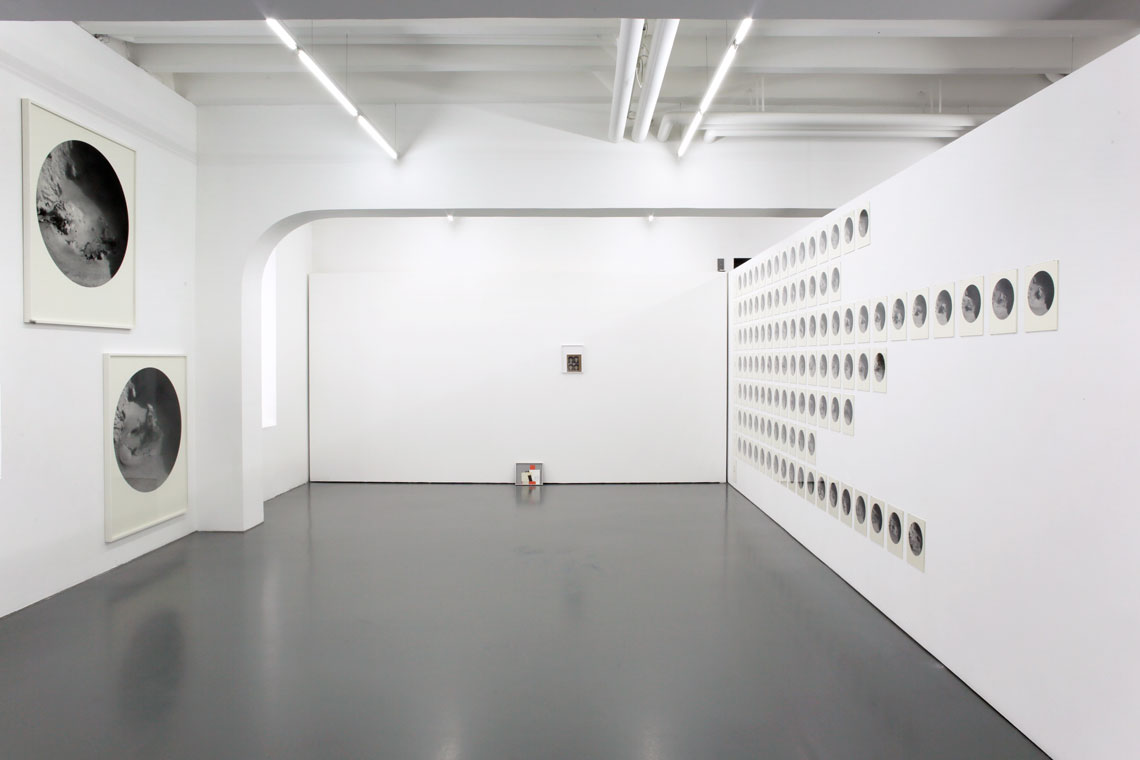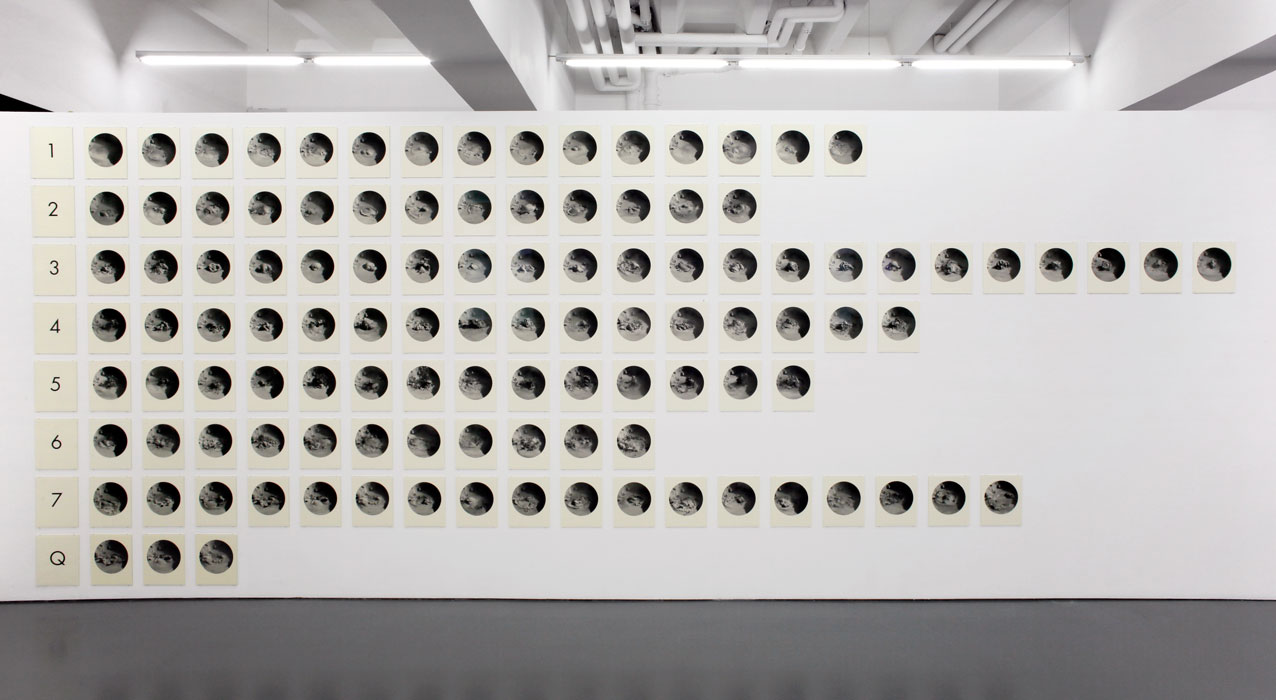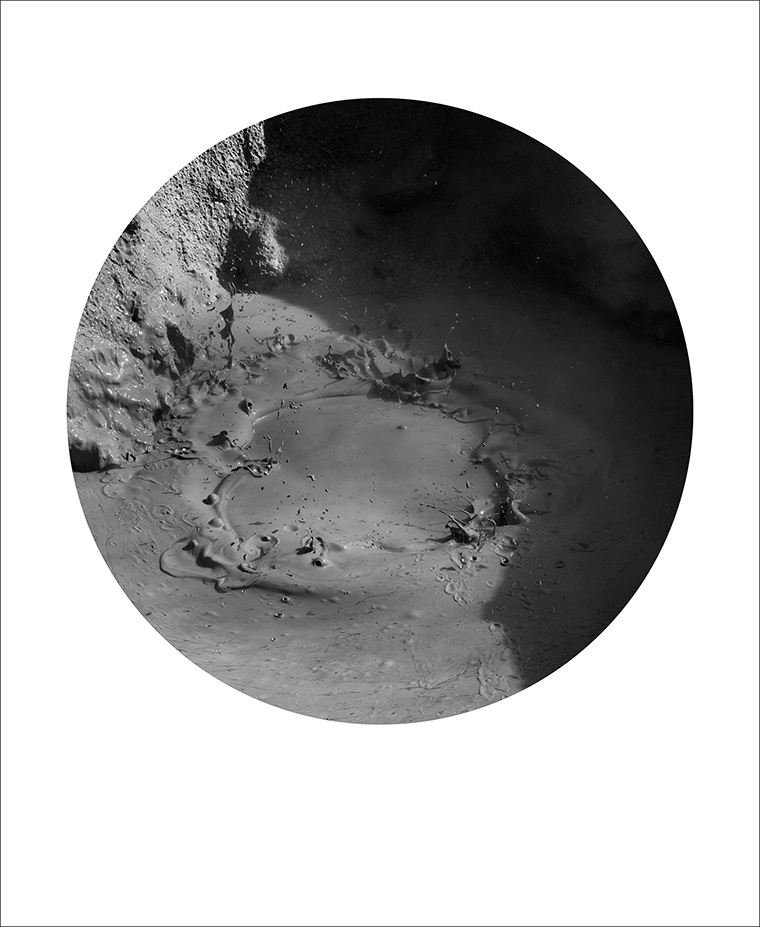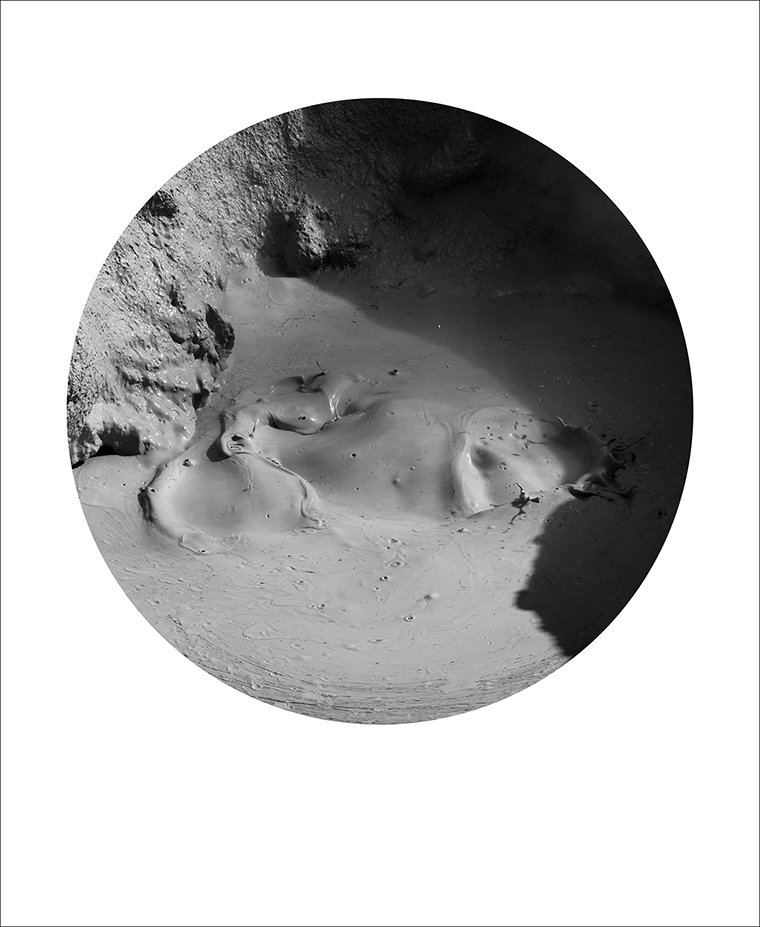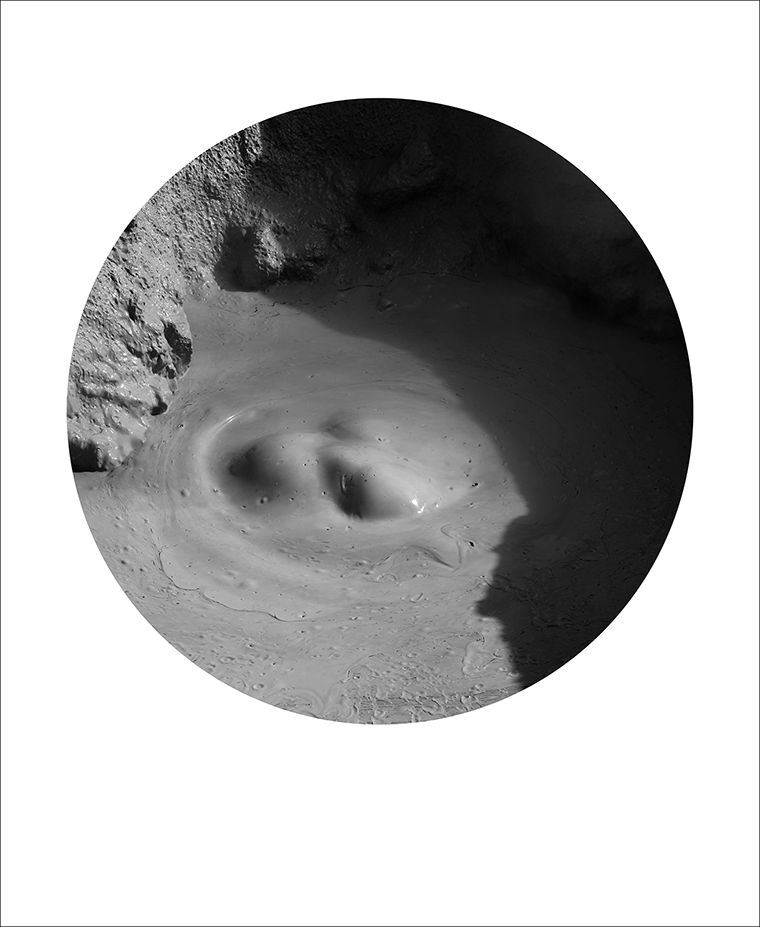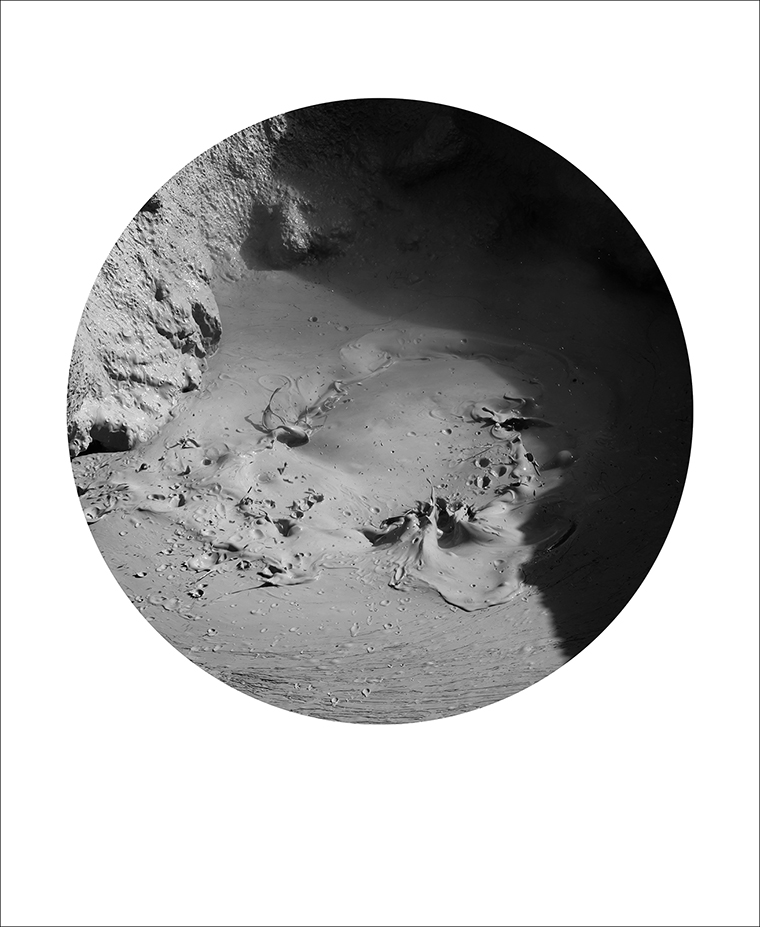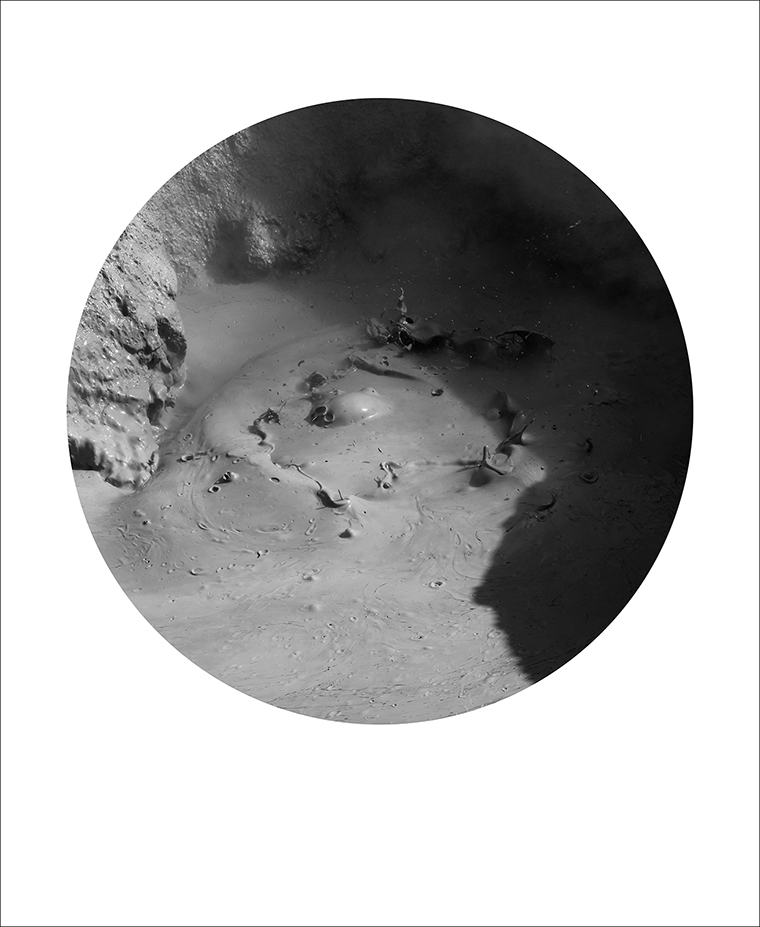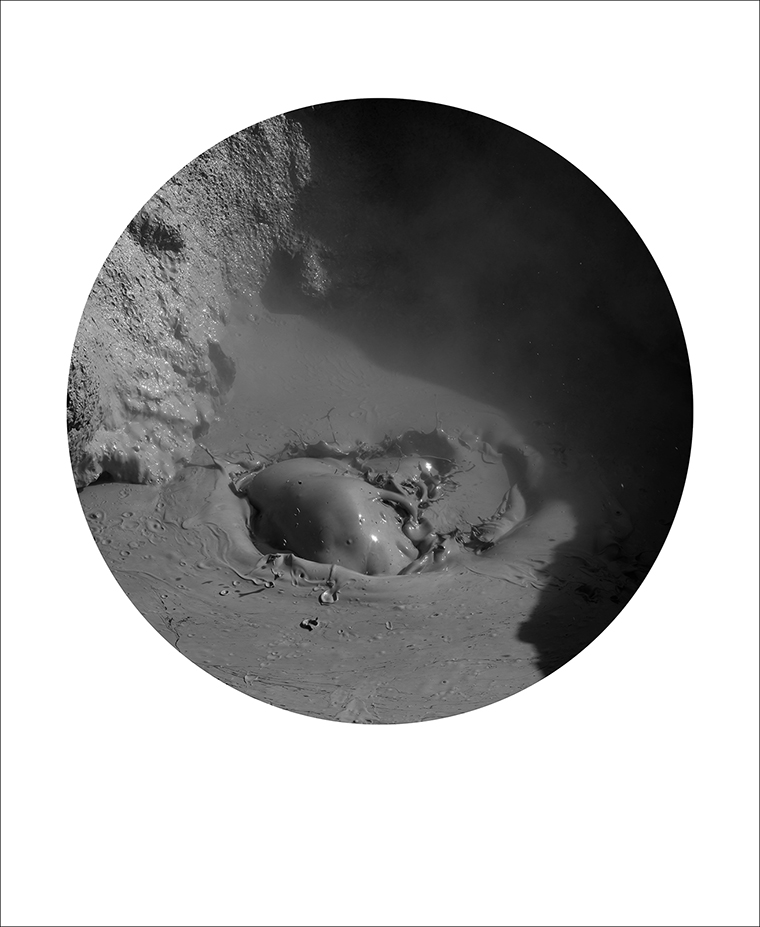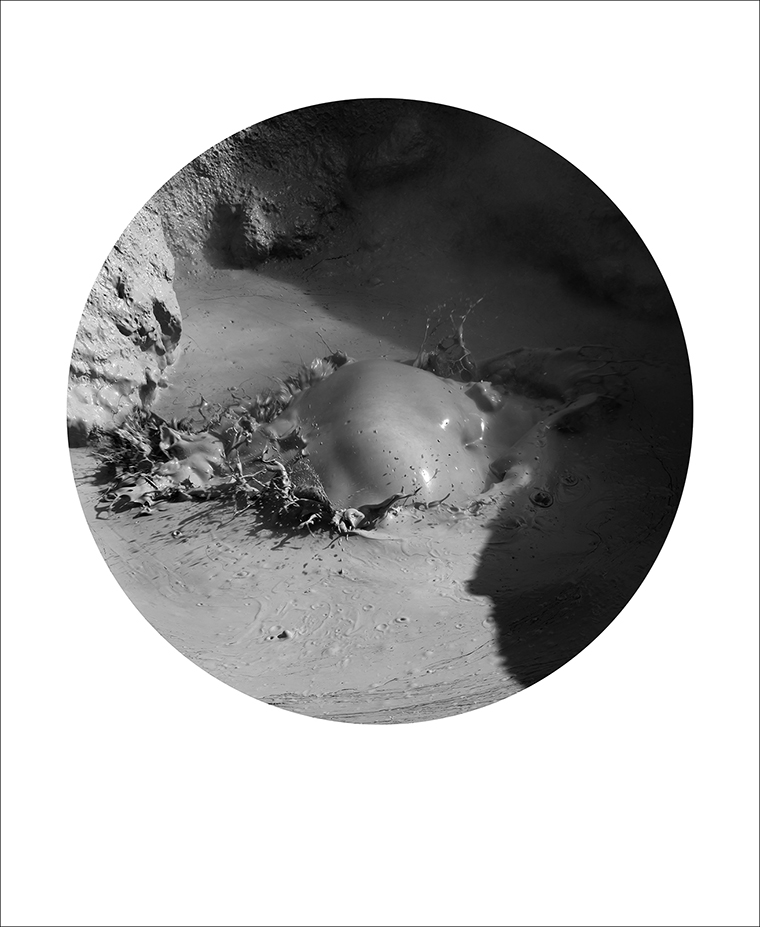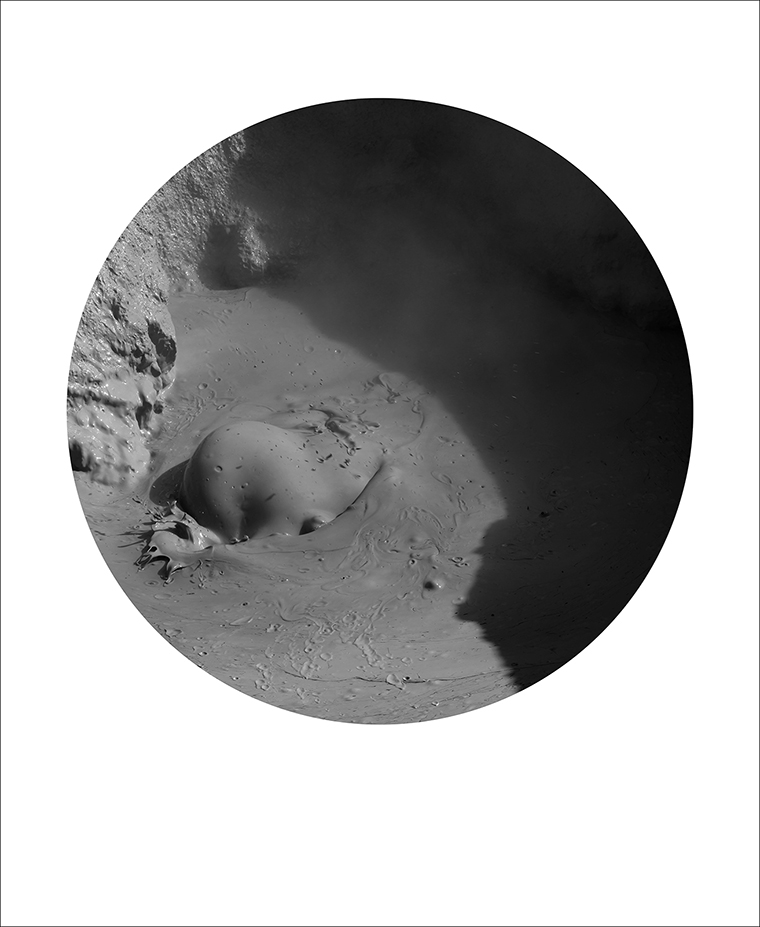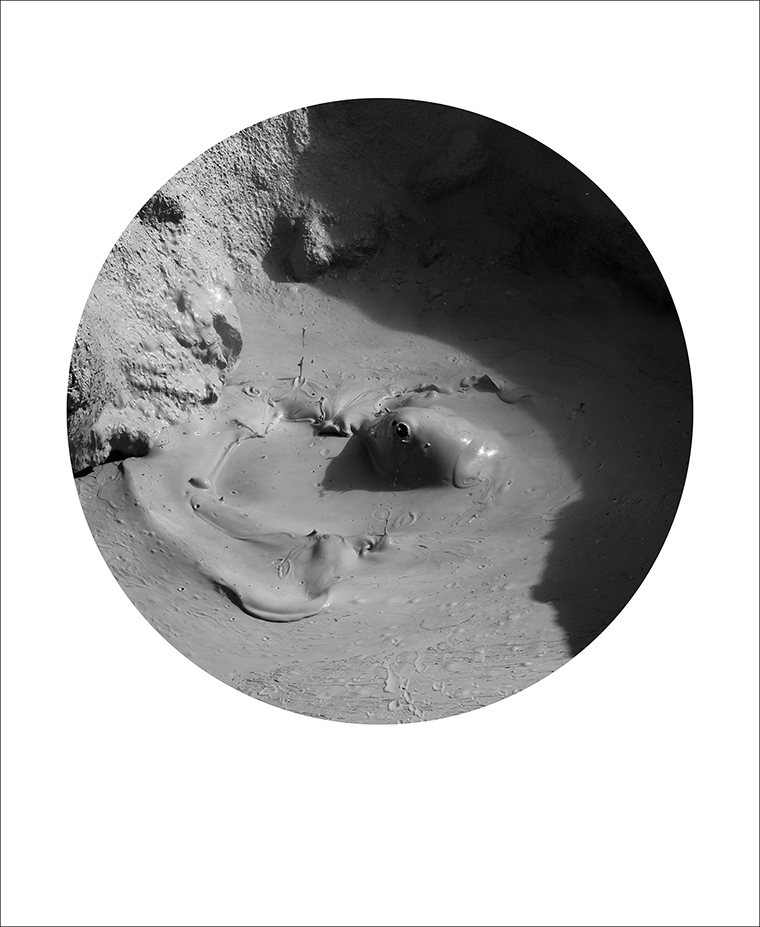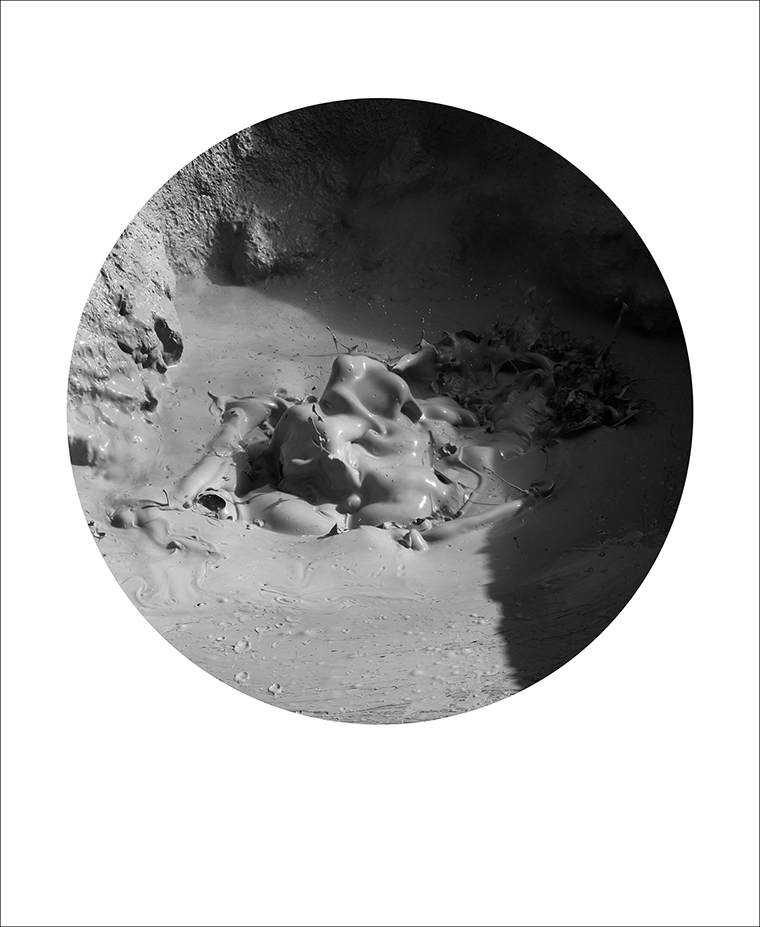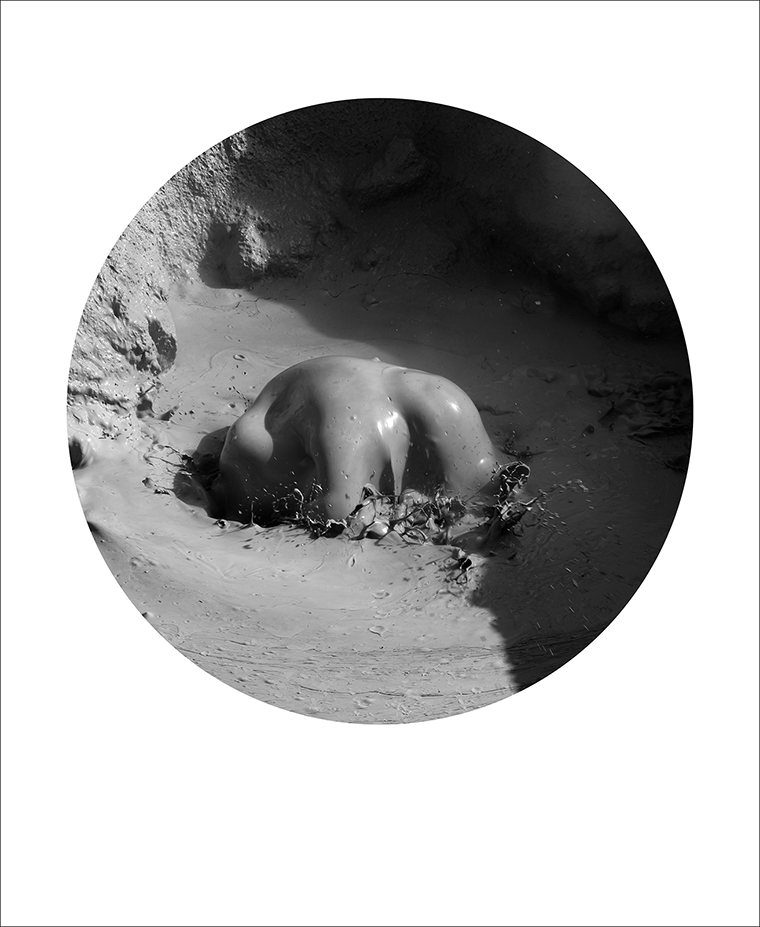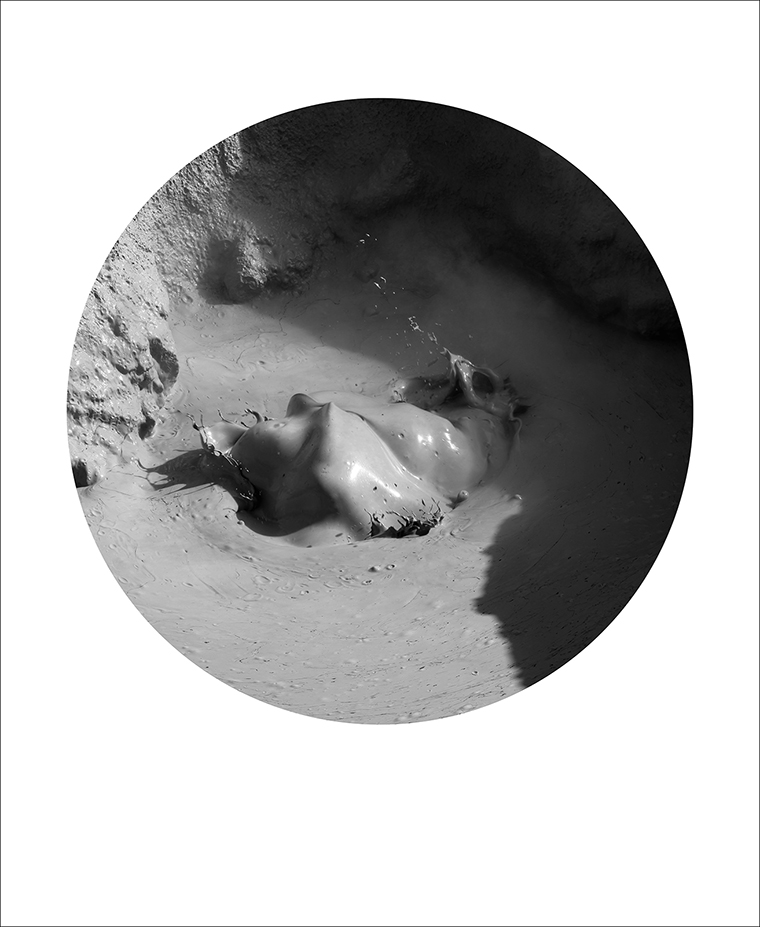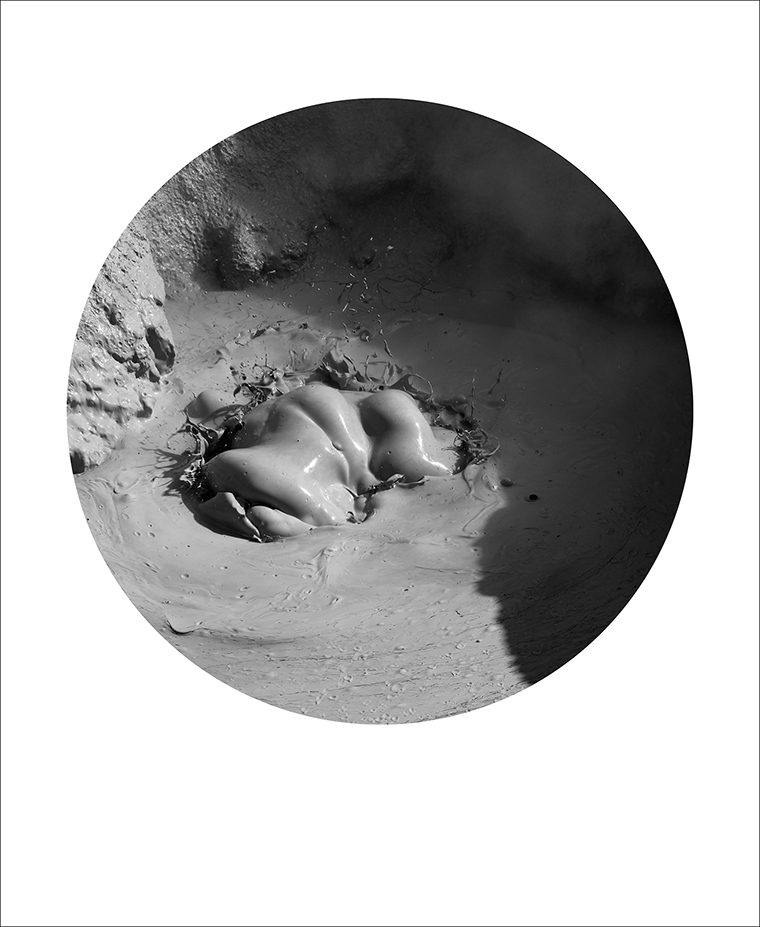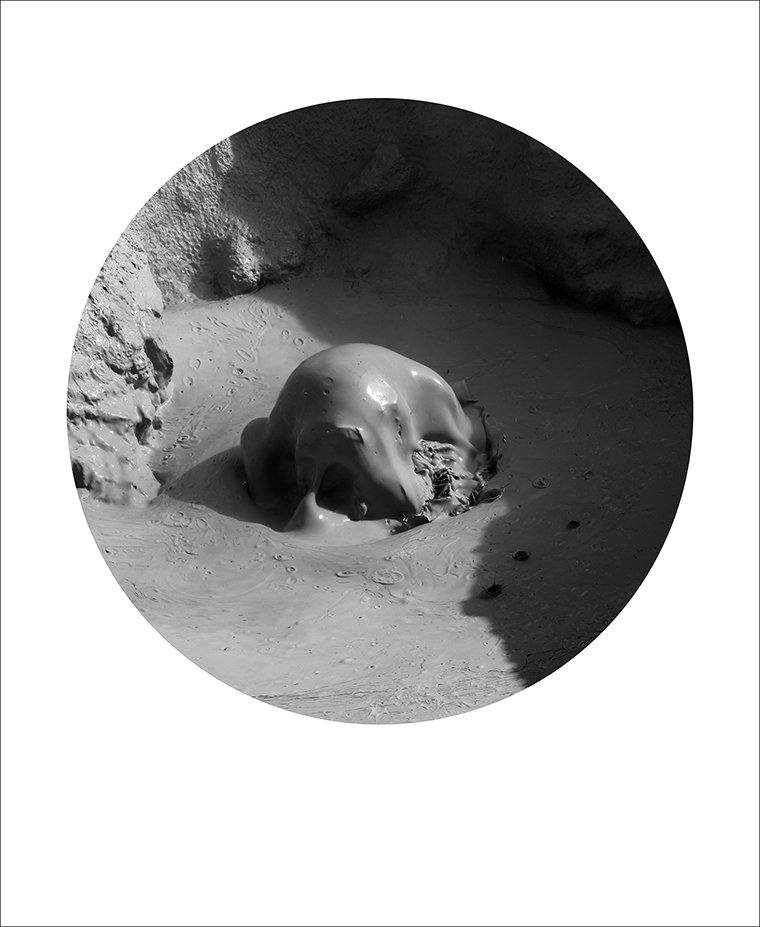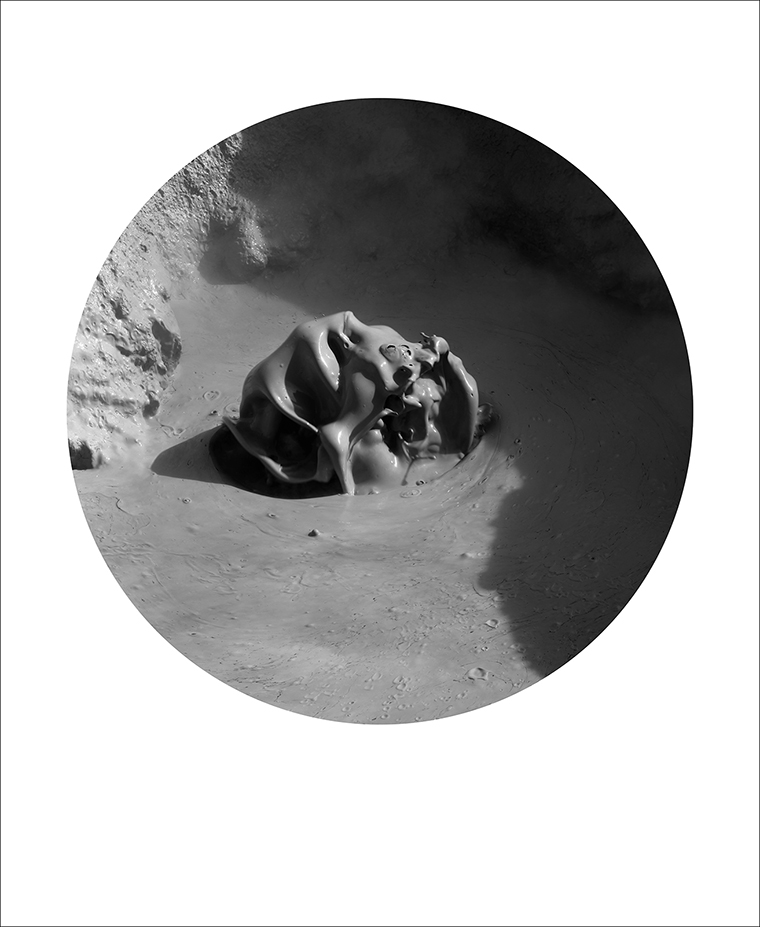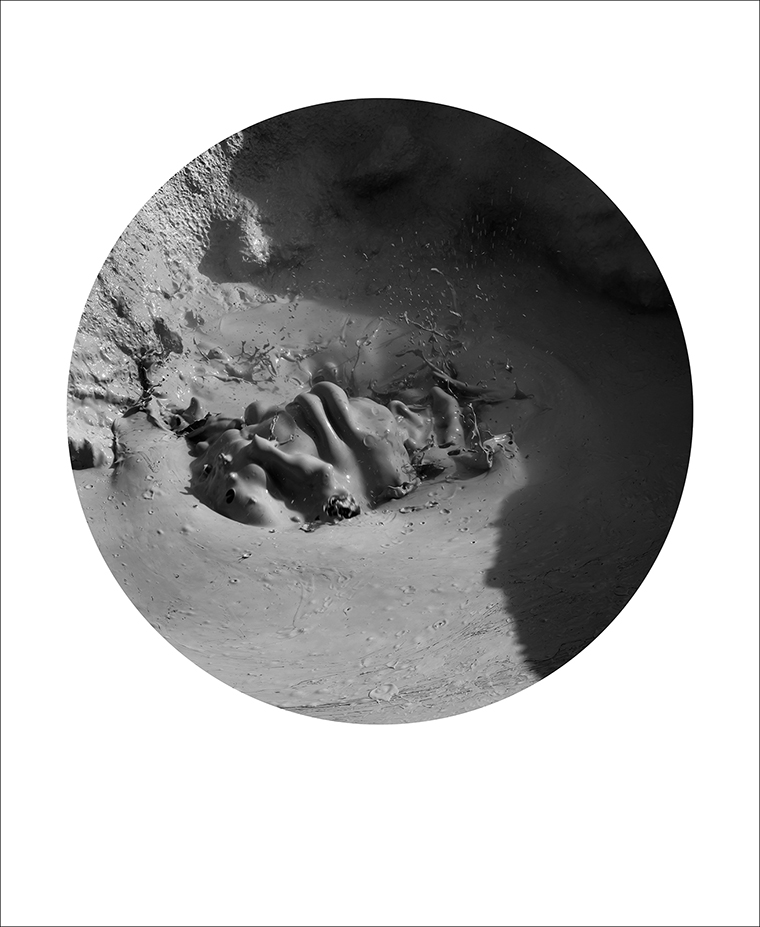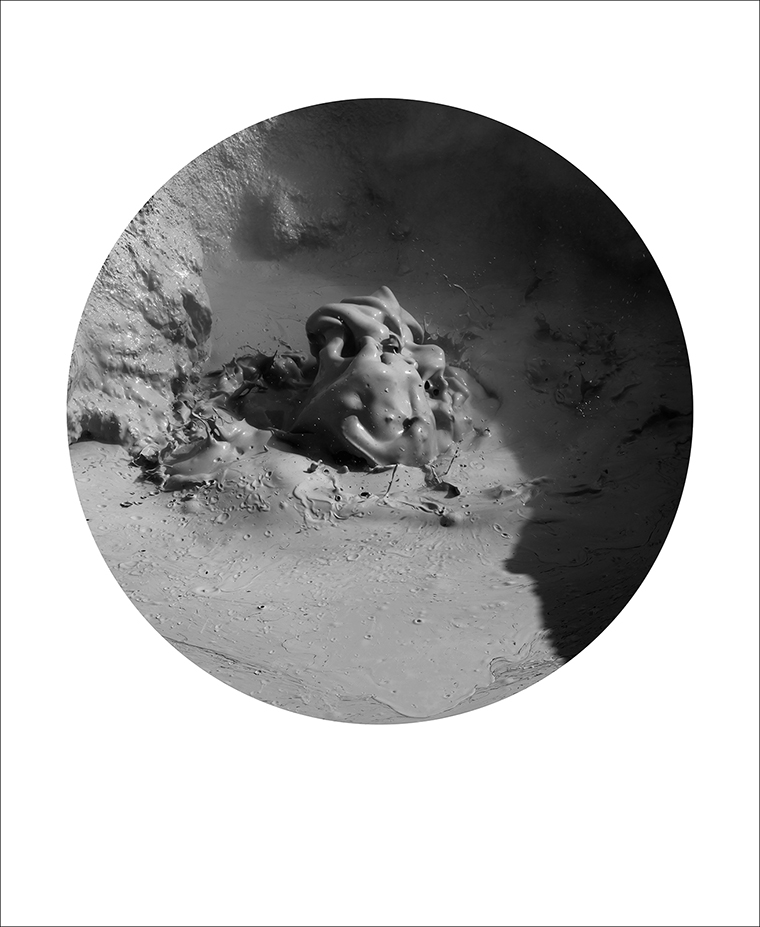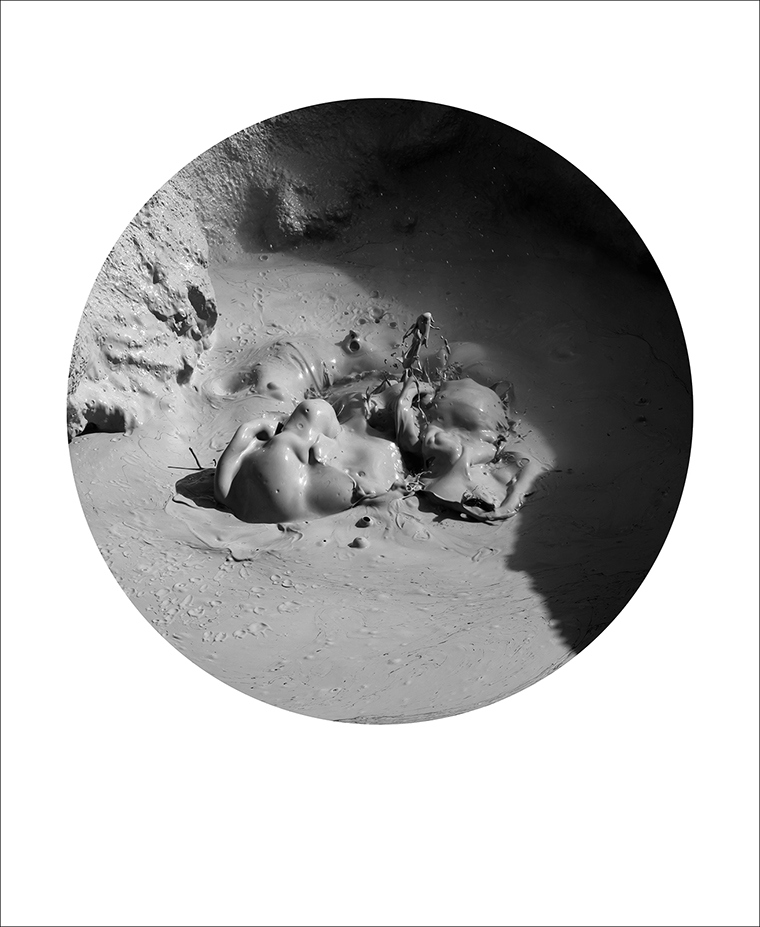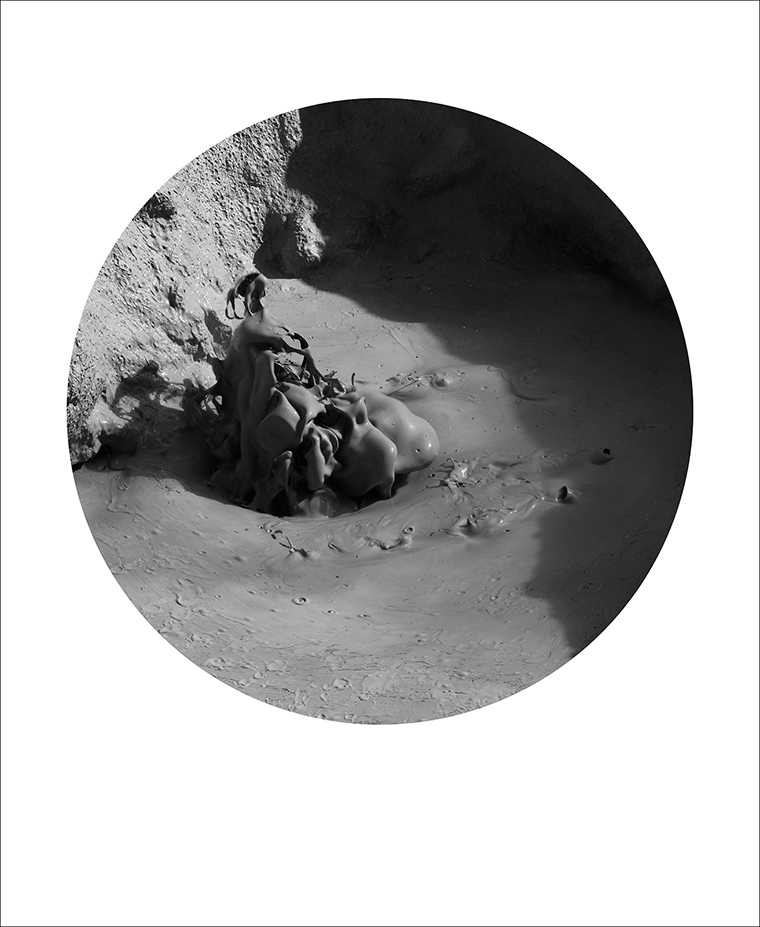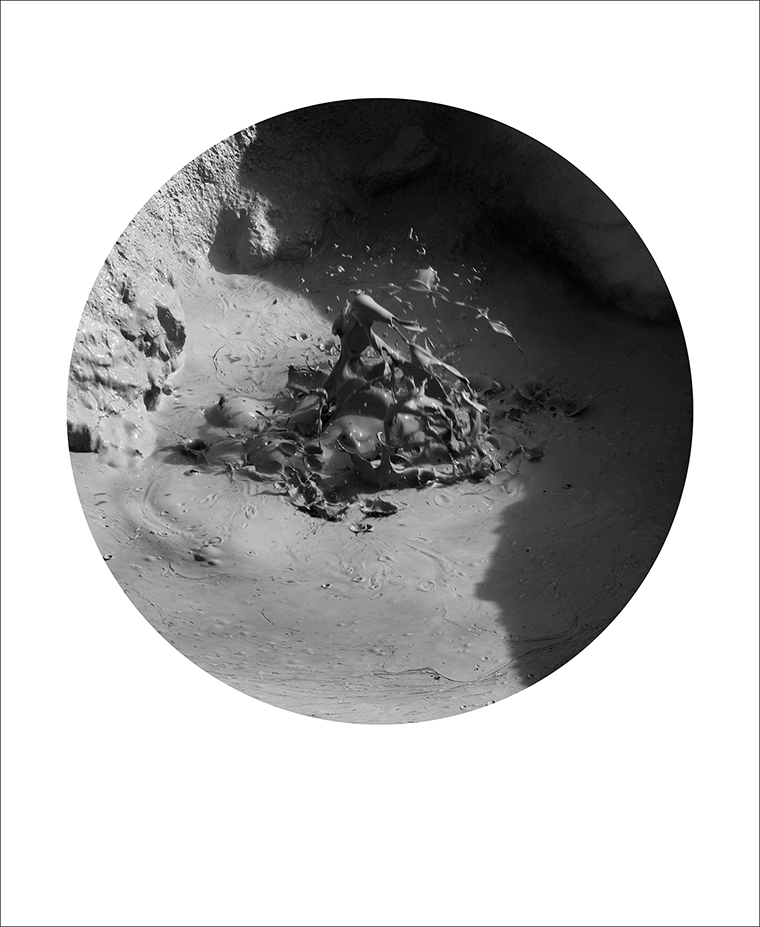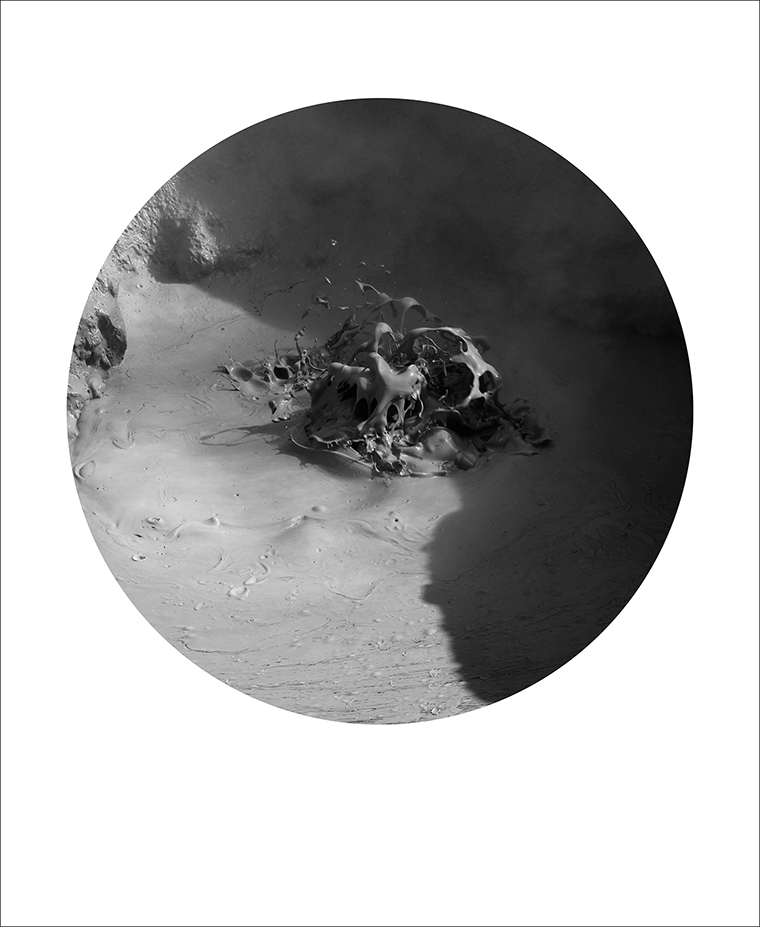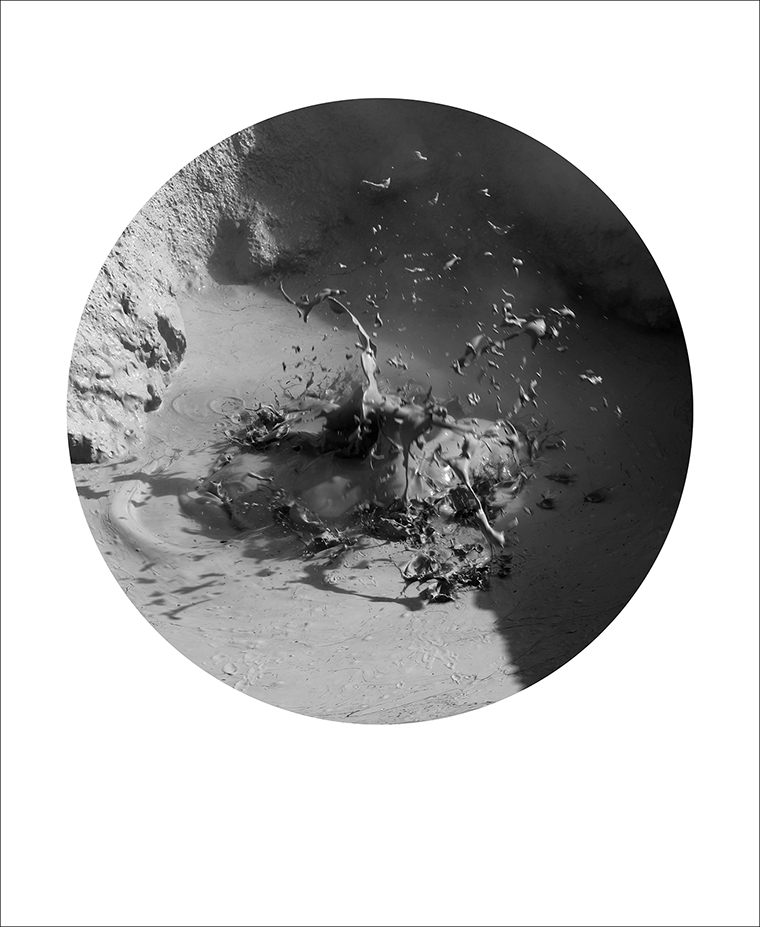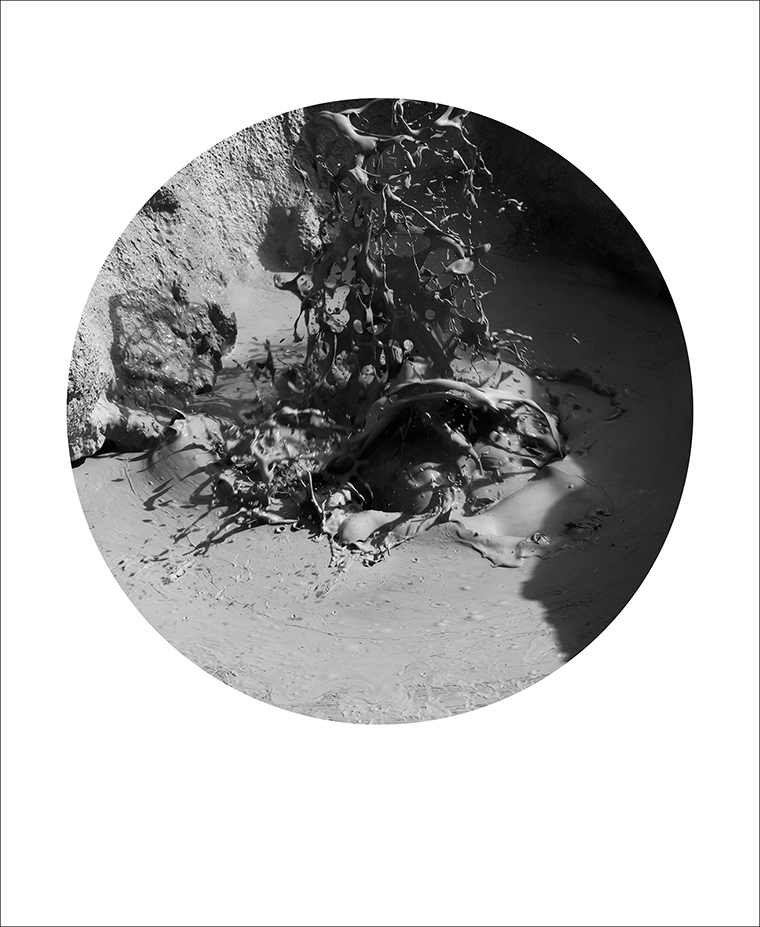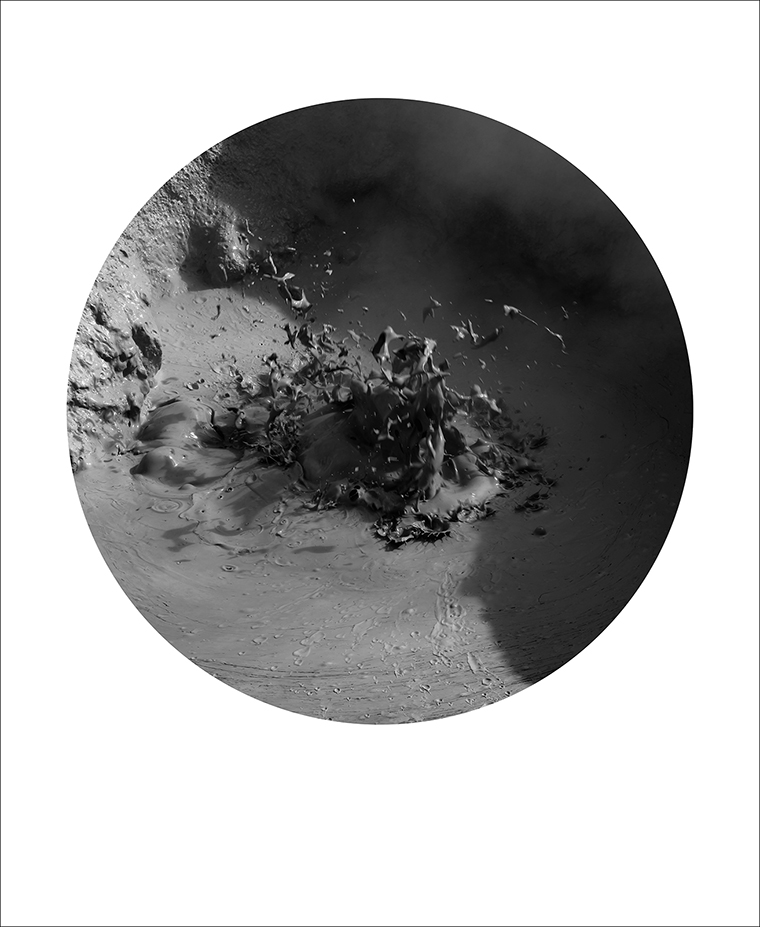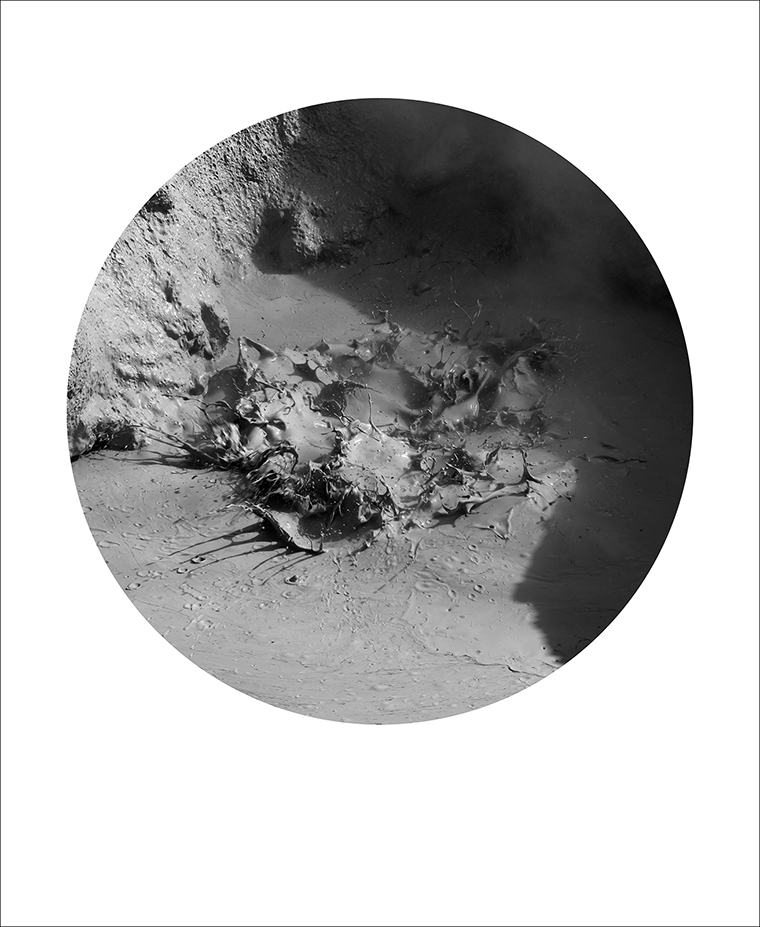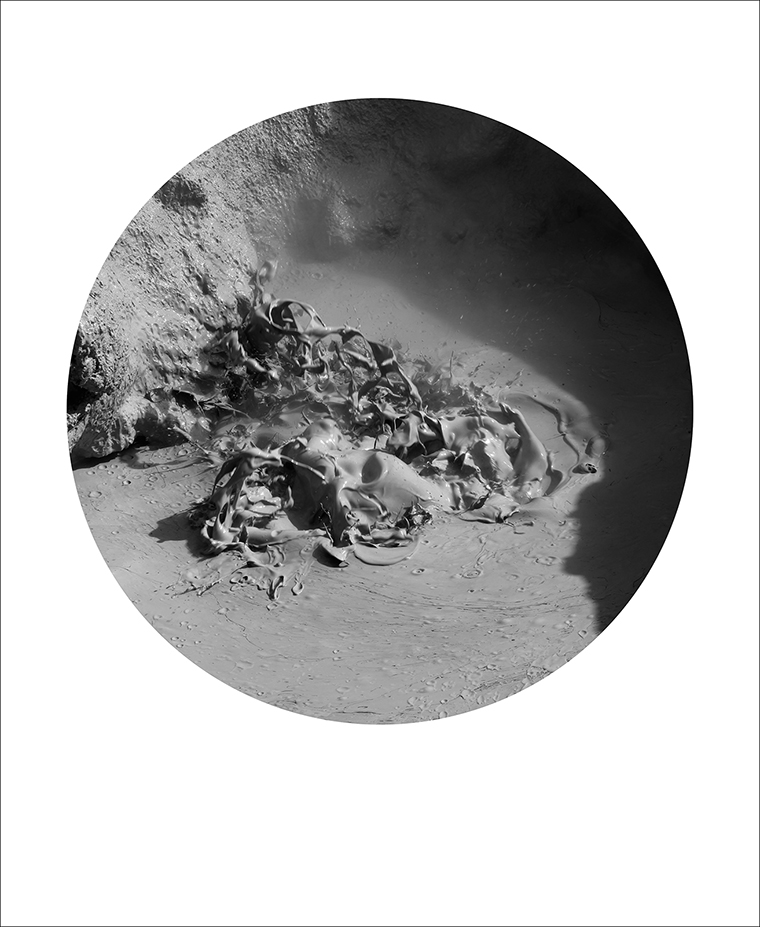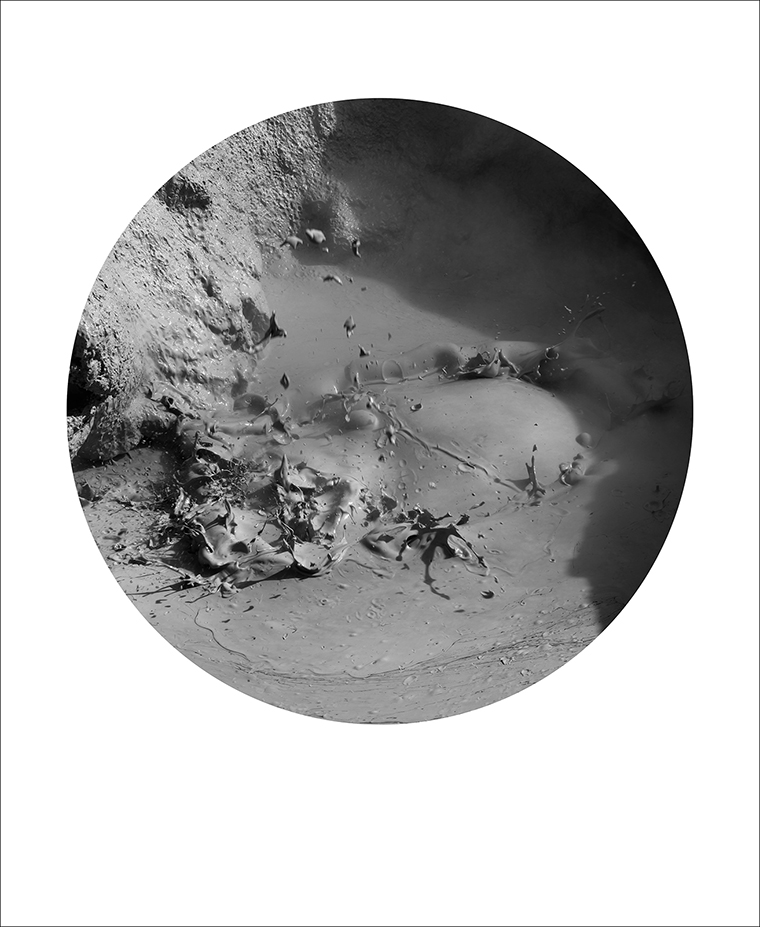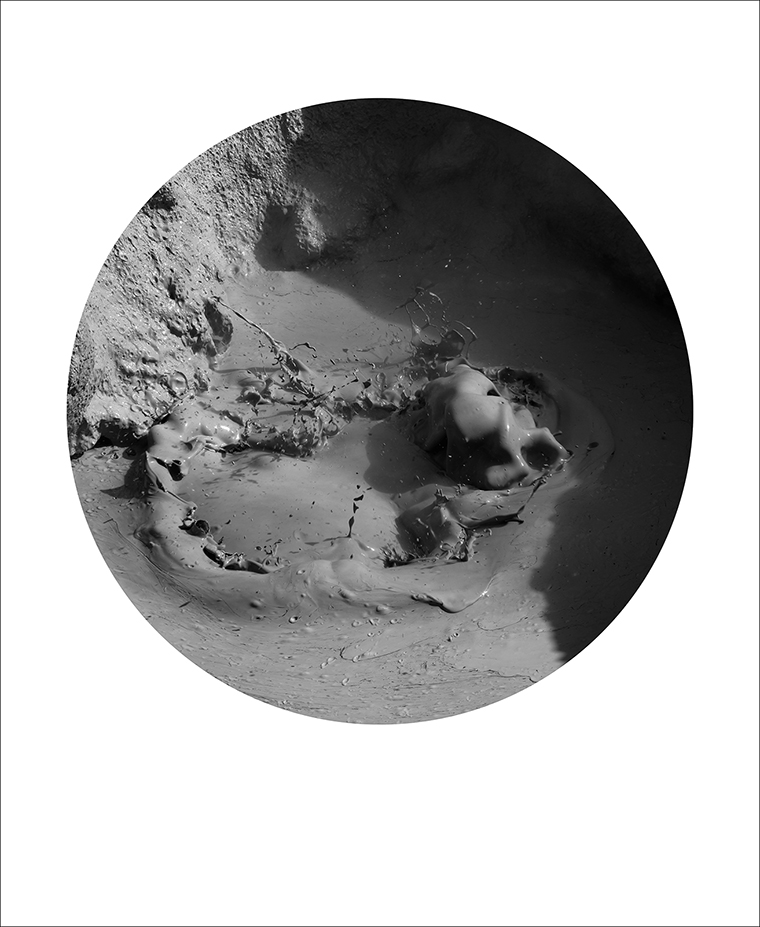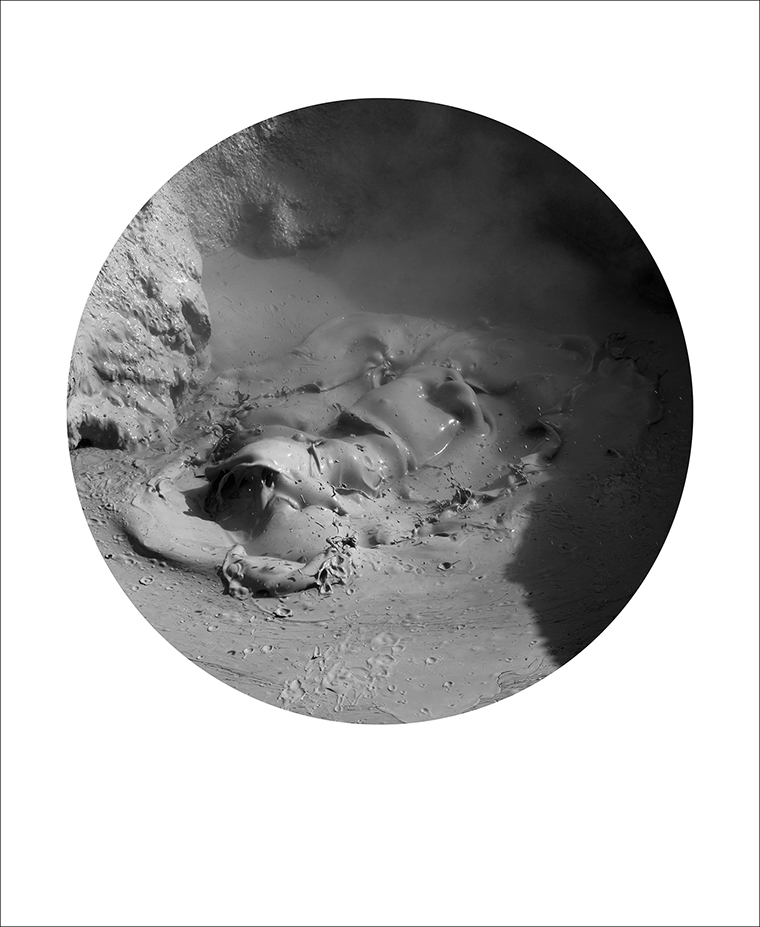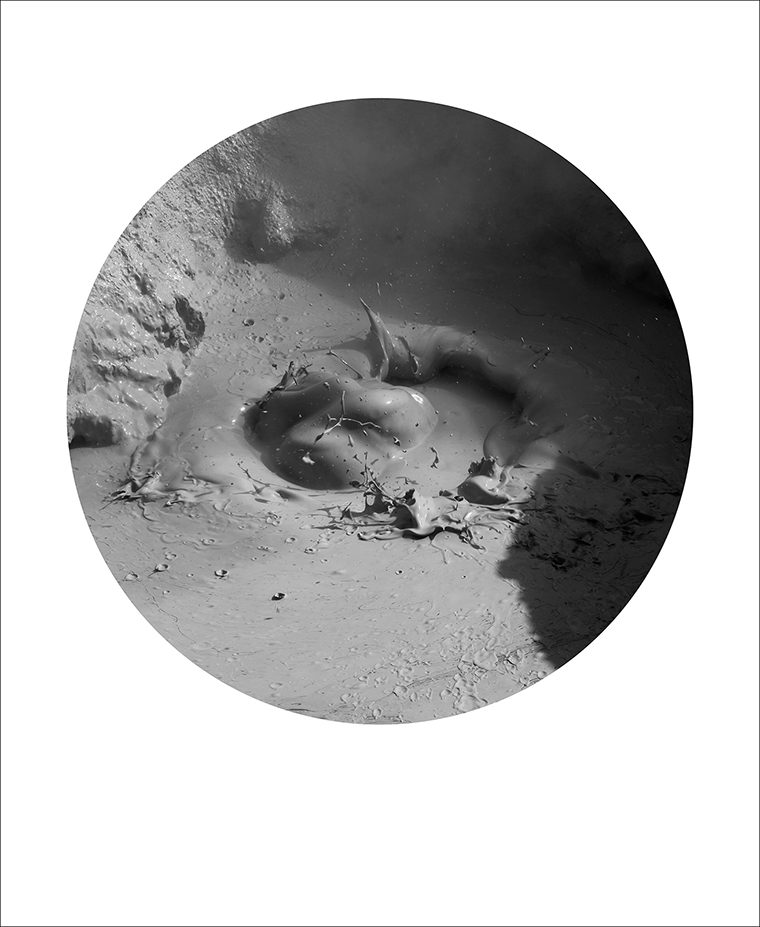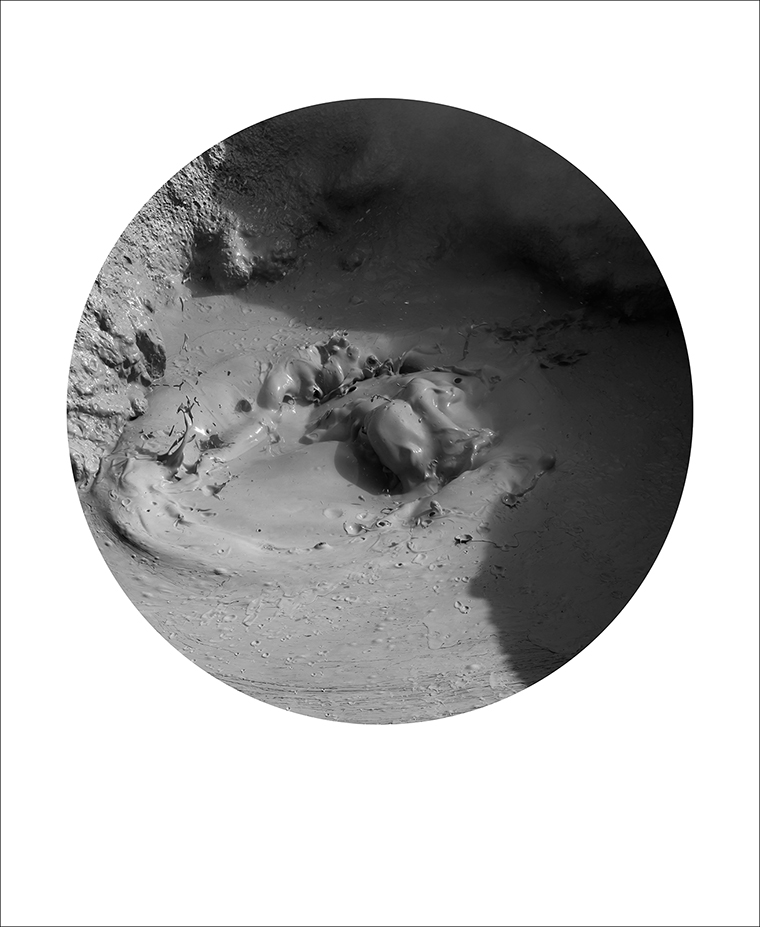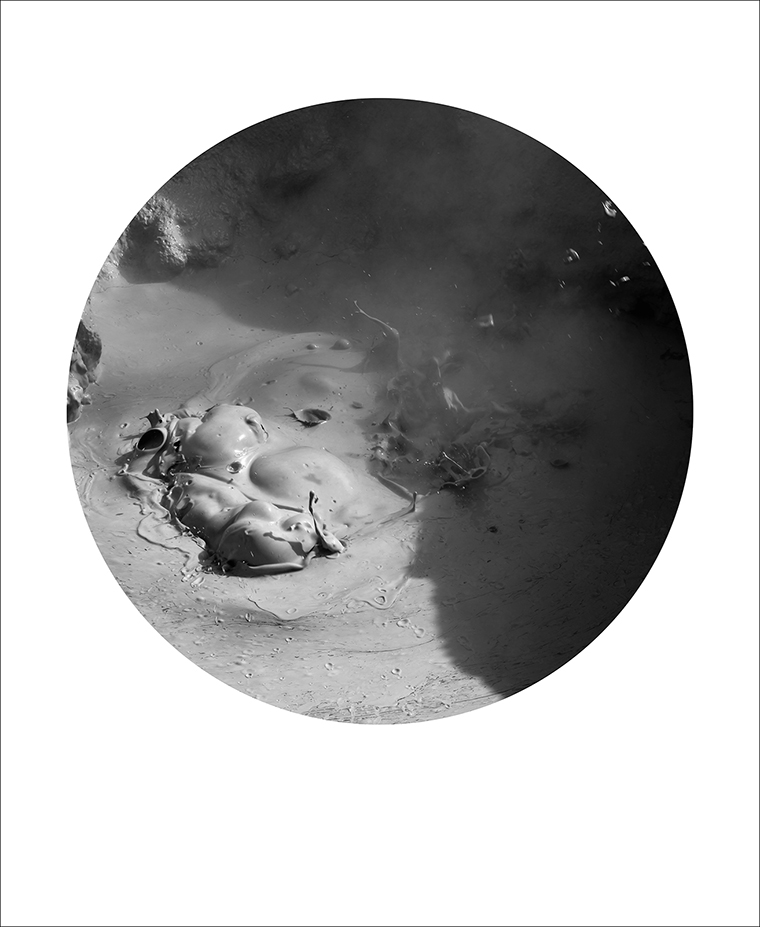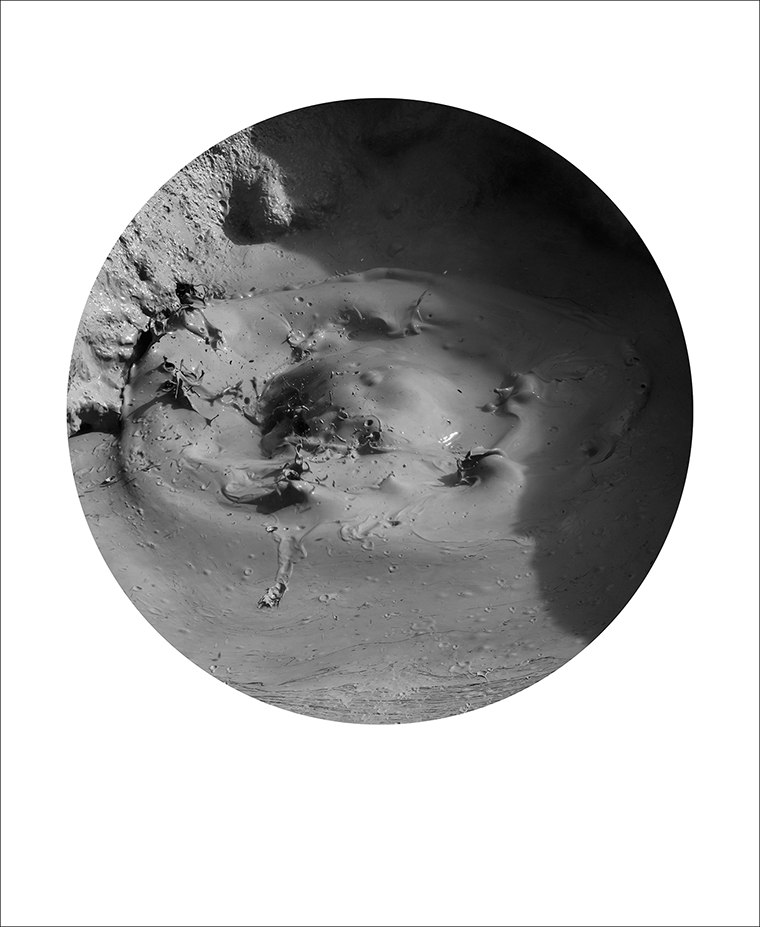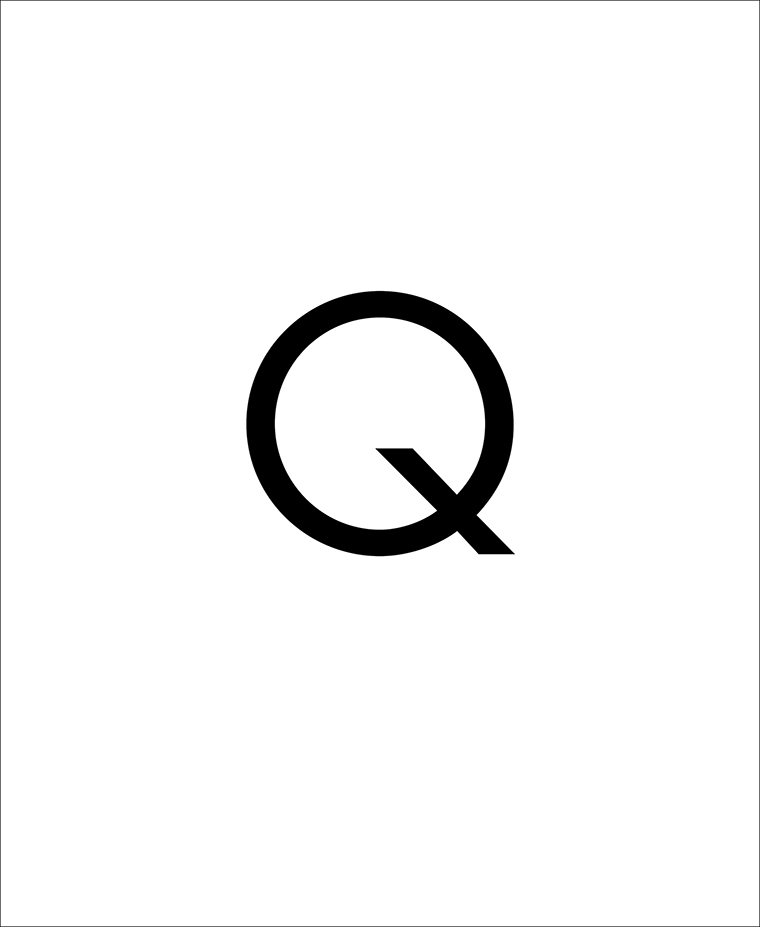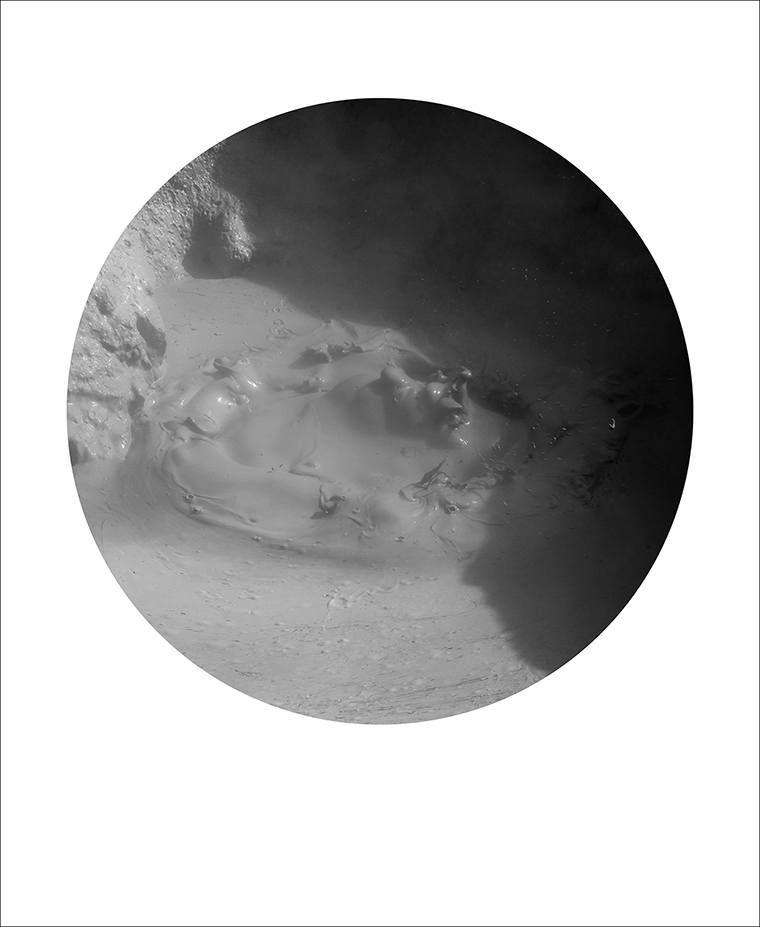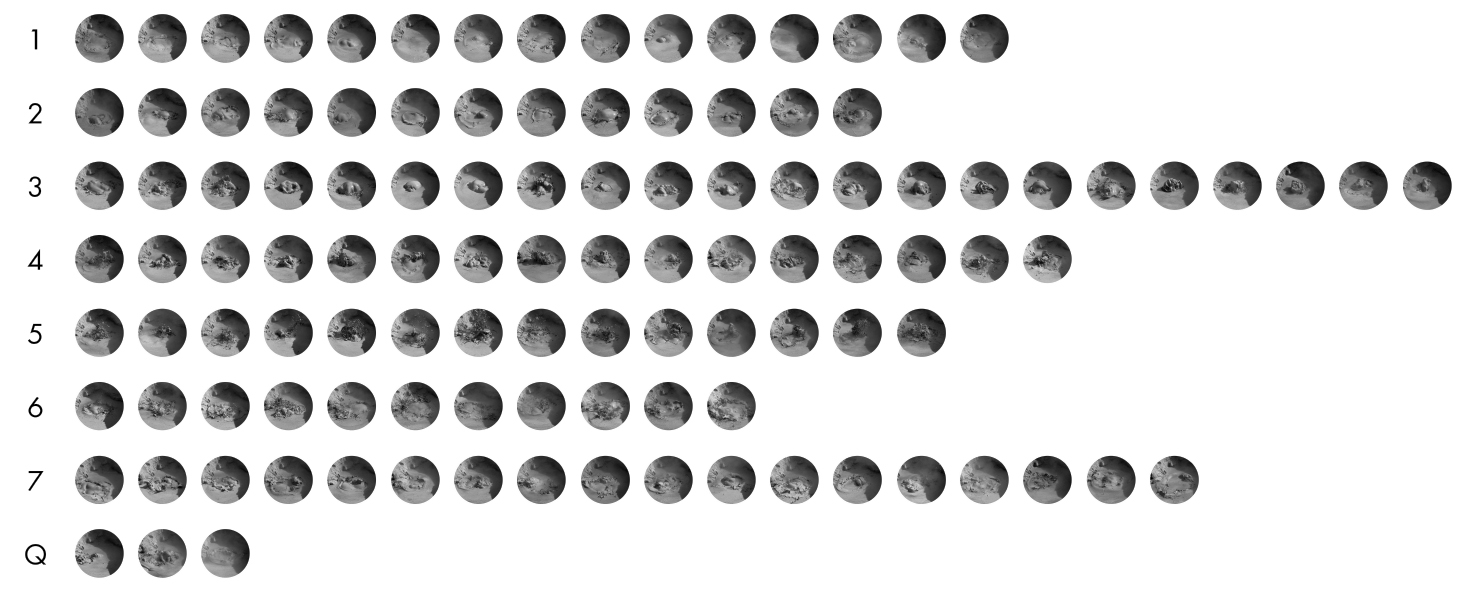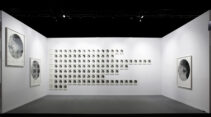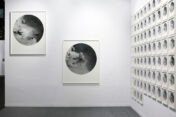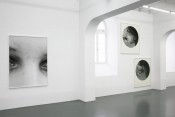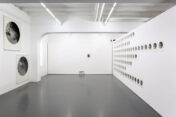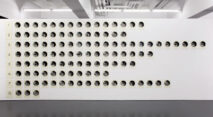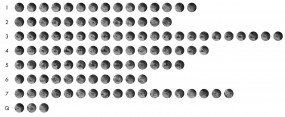L’ECLAT C’EST MOI – Jules Spinatsch’s Icelandic scandal research
The current research project is called Tableau d’Éclats. This shows an arrangement of black-and-white photographs, which appear to document powerful explosions: bomb impacts, volcanic eruptions or the collision of extraterrestrial energy fields. Simultaneously abstract and concrete, the depictions allow many speculations and interpretations, primarily also in an art context that has apparent equivalents in surrealist forms and sculptures. The solution is located in the area between all of these potential perceptions: the pictures were taken in Iceland, where volcanic energy fields emerge at the Earth’s surface and produce bubbling energetic transformations in muddy pools.
Here, media reflection also plays a role when the artist, during his associative research, discovers that there is an independent éclat theory, so to speak, which has found its way into media studies in the form of the book L’Eclat c’est moi. Helmut Moser’s 1989 publication, with the subtitle „Notizen zu Stand und Begriffen der skandalforschung“ (Notes on the State and Terminology of Scandal Research), addresses the medial mechanisms of „scandal rebuffal“. According to Moser, the various stages of escalation are as follows: „discovery, publication, attack and defence, dramatisation, labelling, status degradation“. While arranging his 112 éclat images in seven developmental steps according to formal principles, Spinatsch discovered the analogy between scandal theory and the formal build-up of tension that takes place when volcanically hot mud bubbles burst. Thus, in their formal escalation, the Icelandic bubble photos replicate the relentless dynamics of the media scandal – and indeed literally in all four dimensions: in the flat media reality, in the mental trauma and in the impact over time, the half-life of which, fortunately for those affected, is becoming ever shorter in the context of the society of the spectacle.
